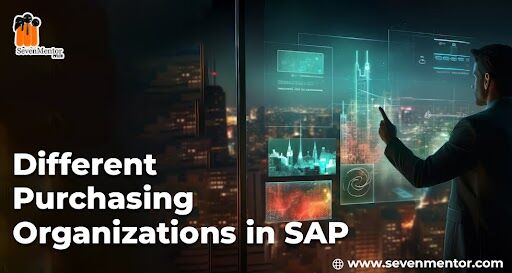Different Purchasing Organizations in SAP
In SAP (Systems, Applications, and Products in Data Processing), a purchasing organization is a very important organizational unit within the materials management (MM) module. It is accountable for procurement activities, negotiating terms with suppliers, and ensuring the availability of materials. There are different types of purchasing organizations, each serving specific motives within an enterprise. Here are the main types of purchasing organizations. Explore the Different purchasing organizations in SAP and understand their roles and functions in optimizing procurement processes within a business.
1. Centralized Purchasing Organization
- Description: Manages procurement for the entire company from a single location.
- Advantages: Combined purchasing power, standardized processes, better negotiation purchase, and bulk purchasing benefits.
- Example: A global purchasing organization that handles procurement for all subsidiaries all over the world.
2. Decentralized Purchasing Organization
- Description: Individual purchasing organizations are allocated to specific plants or locations.
- Advantages: Localized control, tailored procurement strategies, faster response to local needs, and better alignment with local vendors.
- Example: Separate purchasing organizations for each regional office or plant within an enterprise.
3. Cross-Plant Purchasing Organization
- Description: One purchasing organization responsible for procurement across multiple plants within an enterprise.
- Advantages: Well-organized processes across plants, improved coordination, and shared resources.
- Example: A purchasing organization managing procurement for multiple manufacturing plants in different regions of the same company.
4. Cross-Company Code Purchasing Organization
- Description: A purchasing organization that procures materials and services for multiple company codes within a corporate group.
- Advantages: Centralized procurement of materials for group companies, better terms and conditions with suppliers, and group-wide standardization.
- Example: A parent company’s purchasing organization holding procurement for all its subsidiaries.
5. Plant-Specific Purchasing Organization
- Description: A separate purchasing organization is defined for each plant in an organization.
- Advantages: Greatly focused procurement strategies, better control, and faster response to plant-specific needs.
- Example: A purchasing organization devoted to a single manufacturing plant.
For Free, Demo classes Call: 020-71173116
Registration Link: SAP MM Course in Pune
6. Reference Purchasing Organization
- Description: A model purchasing organization that gives guidelines and frameworks and also negotiates better prices and conditions of materials with vendors for plant-specific purchasing organizations within the company.
- Advantages: make sure consistency in procurement processes, provide a benchmark for other purchasing units, and support best practices.
- Example: A reference purchasing organization that defines standard operating procedures for plant-specific purchasing organizations.
Configuring Purchasing Organizations in SAP
- Define Purchasing Organizations: We can create and configure purchasing organizations in SAP using transaction code OX08.
- Assign Purchasing Organizations to Company Codes: We can interlink purchasing organizations to the appropriate company codes using transaction code OX01.
- Assign Purchasing Organizations to Plants: We can Connect purchasing organizations to the relevant plants using transaction code OX17.
- Define and Use Purchasing Groups: We can create purchasing groups within purchasing organizations to manage specific procurement tasks and responsibilities.
Understanding and successfully configuring these different types of purchasing organizations in SAP can significantly boost procurement efficiency, cost-effectiveness, and strategic alignment within an enterprise.
Do visit our channel to know more: Click Here
Author:-
Prahlad Pawar
Call the Trainer and Book your free demo Class for SAP now!!!
© Copyright 2021 | SevenMentor Pvt Ltd.
